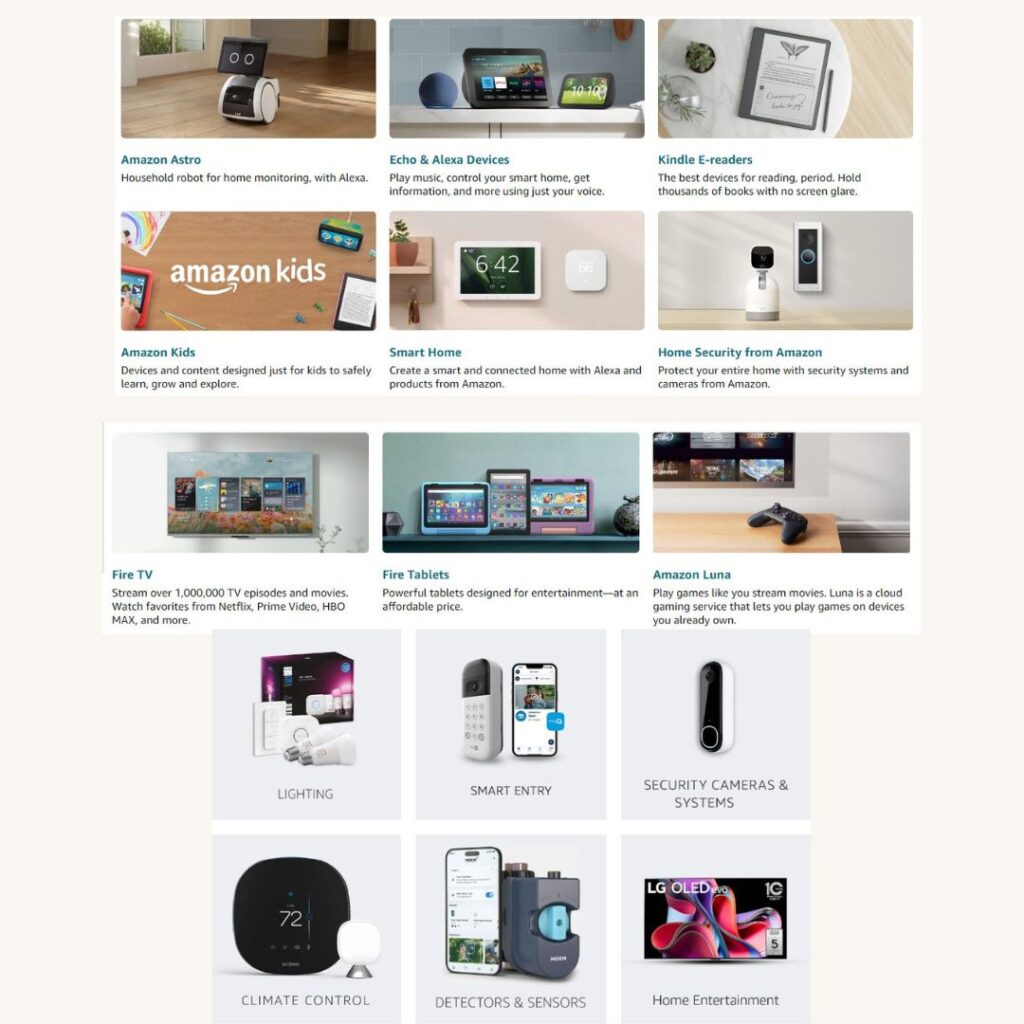Amazon Smart Home: Leading the Rise of American Homes, But How Smart Are They?

Amazon Smart Home Reign: Will the iRobot acquisition crown them kings? Amazon Smart Home: Leading the Rise of American Homes, But How Smart Are They?
The American home is undergoing a dramatic transformation. Gone are the days of manual switches and isolated appliances; Amazon Smart Home is at the forefront of a revolution, weaving intelligence and automation into the very fabric of our living spaces. But just how smart are our homes, and how will the recent acquisition of iRobot propel Amazon further ahead?

Dominating the Landscape:
With 85% of Americans owning at least one smart home device, according to Statista, Amazon reigns supreme. Their Echo speakers and Alexa voice assistant have become synonymous with smart living, controlling everything from thermostats and lighting to music and entertainment. But Amazon’s reach extends far beyond these core devices. They offer a staggering array of products, from smart plugs and sensors to connected appliances and even security cameras.
 You will find more infographics at Statista
You will find more infographics at Statista
Beyond TVs and Streaming Sticks:
While smart TVs and streaming sticks dominate device ownership (as do basic functions like Wi-Fi), the true heart of the Amazon Smart Home lies in connected devices that actively personalize and automate our lives. Smart thermostats optimize comfort and energy efficiency; automated lighting systems create dynamic ambiance; and connected appliances can even preheat your oven or start brewing coffee on command.
Amazon Smart Home: iRobot Acquisition: Mapping the Future of Smart Homes:
The recent acquisition of iRobot, known for its iconic Roomba vacuums, promises to further solidify Amazon’s dominance and shape the future of smart homes. iRobot’s advanced mapping technology and expertise in navigation hold immense potential, not just for smarter and more efficient robot vacuums but for a truly interconnected home ecosystem.
Amazon Smart Home: Imagine a future where:
- Your Roomba seamlessly integrates with your Echo, allowing you to voice-activate cleaning schedules or even program cleaning paths around specific items.
- iRobot’s mapping data learns your home layout, enabling a network of connected devices to personalize settings and automate tasks based on your routines and preferences.
- Security cameras equipped with iRobot’s navigation capabilities patrol your home more effectively, providing a comprehensive and dynamic security solution.

Amazon Smart Home: Challenges and the Path Forward:
While the future looks bright, challenges remain. Compatibility issues between devices from different manufacturers can still be a headache, and privacy concerns regarding data collection and security require careful consideration. Transparency and robust security measures are crucial to maintaining user trust in this evolving landscape.
Ultimately, the “smartness” of our homes isn’t just about gadgets and gizmos. It’s about convenience, efficiency, and personalization. As Amazon Smart Home continues to evolve, driven by innovations like the iRobot acquisition, the answer to “how smart are American homes?” will become increasingly nuanced and exciting. The future of the smart home is just beginning, and Amazon is at the forefront, paving the way for a future where our homes seamlessly adapt to our needs and preferences, making our lives easier, more comfortable, and perhaps even a little bit magical.
Smart Home Security Breaches?
Smart home security breaches can occur when hackers gain unauthorized access to smart home devices and networks, allowing them to steal personal information, spy on users, or even take control of the devices . Some examples of smart home security breaches include hackers remotely controlling smart lights and smart TVs, unlocking IoT-enabled doors, and remotely turning on and streaming video from smart cameras .
Tips on Privacy Protection in Smart Home Environments.
Here are some actionable tips for users on how to protect their privacy in smart home environments:
- Use a virtual private network (VPN) on your router: A VPN encrypts outgoing data and masks your IP address, making it harder for a hacker to access the network .
- Secure your Wi-Fi network and connected devices with strong passwords: Use strong and unique passwords for each device and change them regularly .
- Isolate IoT devices on a separate network: Create a separate network for IoT devices to prevent unauthorized access to other devices on the same network
- Enable appropriate privacy settings on your devices and disable features you don’t need: Review the privacy settings of your devices and disable features that you don’t use or need .
- Keep your devices updated and turn them off when you are not using them: Regularly update your devices’ firmware and software to ensure that they are secure and turn them off when you are not using them .
Amazon Q: A Powerful Tool to Improve your Customer Service
Bridging the Digital Divide: Focus on Amazon’s Kuiper Satellite Initiative





